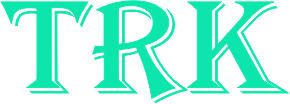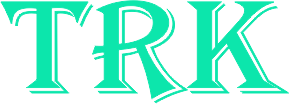Uncategorized
Chart of Accounts: Setup Guide and Examples
It serves as the backbone of an http://vet-sovet.ru/tl/reformy-aleksandra-tretego-kratko-aleksandr-iii-i.html accounting system, providing a framework for organizing financial data in a logical manner. The COA is tailored to an organization’s needs and can vary widely in complexity. This Chart of Accounts provides a foundation for nonprofit organizations to systematically track and report their financial transactions. Regular reviews and updates to the CoA are recommended to reflect changes in operations and financial practices. Chart of accounts (COA) is a financial tool that acts like an index for a business’s financial transactions.
What does COA stand for?
The difference is that most businesses will have many more types of accounts than your average individual, and so it will look more complex; however, the function and the concept are the same. Essentially, the chart of accounts should give anyone who is looking at it a rough idea of the nature of your business by listing all the accounts involved in your company’s day-to-day operations. A Chart of Accounts (COA) is used by accountants, financial professionals, and businesses to organize and classify financial transactions for accurate recording, reporting, and sample analysis. The structure of a COA not only facilitates accurate financial recording and reporting but also ensures that all financial transactions are accounted for systematically.
How can a chart of accounts be used in financial reporting?
Modern accounting systems offer tools for automating data entry, generating reports, and even suggesting account categorizations based on transaction types. The chart of accounts can vary from one business to another, but they generally fall into five major categories based on the business’s needs and operational complexity. Understanding these types can help businesses choose or design a COA that best fits their accounting requirements. Our user-friendly interface lets you organize and track all financial transactions in one centralized location. This makes it simple to generate accurate financial reports and analyze data over time.
- When setting up a chart of accounts, typically, the accounts that are listed will depend on the nature of the business.
- Of course, every company’s chart of accounts looks slightly different, and this is primarily impacted by what you choose to include.
- Plus, keeping an eye on different expense types helps the company control its costs and ensure money is spent where it matters most.
- Larger businesses might also need more detailed categories or sub-categories to accommodate diverse transactions and departments.
Application Management
It provides a structured overview of the organization’s finances, categorizing assets, liabilities, equity, revenues, and expenses, facilitating accurate financial reporting and analysis. A chart of accounts organizes your finances into a streamlined system of numbered accounts. You can customize your COA so that the structure reflects the specific needs of your business. A chart of accounts is a comprehensive list of all the accounts used by a business to record its financial transactions. It consists of various accounts, each of which represents a specific category of transactions.
- It is typically divided into categories like assets, liabilities, equity, revenue, and expenses.
- The account names will depend on your type of business, but the classification and grouping should be similar to the sample chart of accounts.
- Our intuitive software automates the busywork with powerful tools and features designed to help you simplify your financial management and make informed business decisions.
- Insurance Expense, Wages Expense, Advertising Expense, Interest Expense are expenses matched with the period of time in the heading of the income statement.
- For example, a well-designed chart of accounts makes it easy for bookkeepers and accountants to figure out which financial transactions should be recorded into which general ledger account.
- It minimizes the chances of human error and ensures that all transactions are accurately categorized within the COA’s framework.
In this chart of accounts for small business, the code is a number, but could be any appropriate system which allows accounts to be grouped together. For example, all the cash accounts have numbers in the range 1000 to 1999. It is normally better to use numbers for account codes as this speeds up the entering of double entry bookkeeping transactions using the numeric key pad on a typical computer keyboard. From there, you can get even more detailed, further categorizing items by their business function, company divisions, product and service lines, and more.
But following this basic structure should give you a strong starting point for your organization. The Revenue section of a Nonprofit Chart of Accounts may look like this example below. Feel free to add any additional accounts or sub-accounts you may need to keep track of your various sources of revenue.
- It categorizes financial transactions into assets, liabilities, income, and expenses, enabling efficient tracking and management of household finances.
- And when it comes to audits (those thorough checks of financial records), having a clear COA makes everything a lot easier, keeping everyone happy and following the rules.
- The numbering system of the owner’s equity account for a large company can continue from the liability accounts and start from 3000 to 3999.
- Some businesses can indicate COGS, gain and losses, etc., as separate accounts to structurize their finances even more granuarly.
Payroll Samples & Templates
Service-oriented businesses often have simpler Chart of Accounts focusing on revenue streams and operational expenses. They might include accounts for service revenue, client invoices, professional fees, and operating https://takebooks.com/index.php?cPath=308_309_486&page=11 expenses like salaries, marketing, and office supplies. Leverage accounting software or specialized tools to create and manage your Chart of Accounts efficiently.
A Chart of Accounts (CoA) for a manufacturing company provides a structured framework for recording and reporting financial transactions, tailored to the unique needs of manufacturing operations. This chart includes accounts relevant to production, inventory management, cost of goods sold (COGS), and more, facilitating detailed financial analysis and strategic planning. Think of your chart of accounts as a roadmap across your operations, indexing all of your different financial accounts in an organized, consumable way. A COA breaks down your transactions during a particular accounting period into specific account categories, helping people quickly gain clear insights into your organization’s financial health. To better understand the balance sheet and income statement, you need to first understand the components that make up a chart of accounts. Knowing how to keep your company’s chart organized can make it easier http://www.cultline.ru/news/japan_news/page-16/ for you to access financial information.

